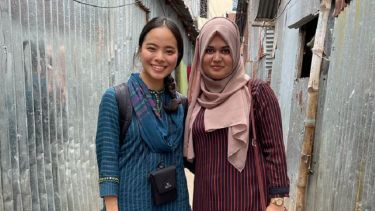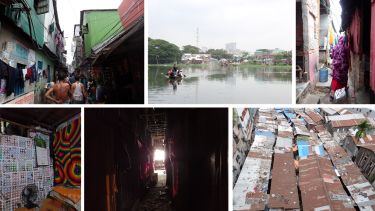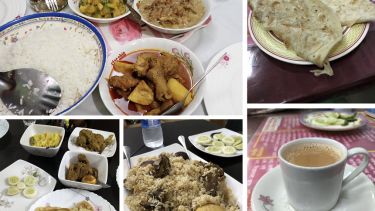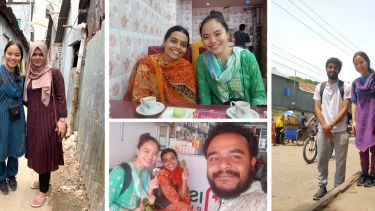I have recently returned from Dhaka, Bangladesh, conducting fieldwork as a part of my master’s dissertation research. My research topic looks at the socio-material assemblage of informal settlements, focusing on informal housing in Dhaka. I have been visiting informal settlements and learning from residents’ stories in order to understand how different physical and social factors and processes come together to form informal housing and the residents’ experiences.
Bangladesh holds a special place in my heart, as it is where I spent my childhood and where I developed an interest in studying architecture and urban design, growing up in the midst of a rapidly urbanising city. As a child I remember being confused at how new houses were being built everywhere but I was also seeing the haphazard increase of informal settlements – which I’ve now come to understand is not a straightforward issue to resolve. It truly felt like a dream-come-true to be back in Dhaka, the exact city where little seeds of curiosity were planted in me, this time a little bit closer to the events and places that had sparked my interests.
During my fieldwork I visited three informal settlement areas in Dhaka and was really fascinated to be inside the houses that I have been zooming into on the Google satellite images over the last year while developing my research proposal. On top of the variations in the physical form and appearance of the housing and interior of the rooms, every resident had different stories to share.
In one of the largest settlements of Dhaka, the houses/rooms were in clusters and there was an informal real estate system where the bariwala (‘landlord’ – but it seems the English translation could be misleading in this context) rented out rooms, typically about 5 rooms and living in the same cluster. There were variations in how the houses were built: one bariwala said they bought materials from the nearby market and constructed the structure themselves, another had said they hired a mistri (carpenter/artisan) in their community to build everything, another family said they had a mistri lead the construction while they helped with the construction process. In a different area, the rental system was less common and many constructed their housing from recycled materials, saying they didn’t want to spend a lot of money buying materials as there are frequent evictions by the police. In another area of private land ownership, I was surprised to learn that there were about 5000 households in the alleys hidden behind the concrete buildings facing the road. It was a complex labyrinth inside, with diverged alleys and underground pathways, far from what I had pictured from the outside road. In this area one bariwala sometimes had more than 100 rooms rented out.
In the settlements I visited, many residents kindly invited me into their rooms and I was completely captivated by the different stories everyone had to share behind certain elements of their housing – whether that was a wall covered in sticker sheets, a glass-fitted window with a white wooden frame, a recycled banner hung over the bed, a beautiful painting and decorations on the wall, a neatly designed curtain hung on the walls. The different construction and modification processes that shape residents’ rooms and their experiences of it was everything I’d been wanting to learn more about but have struggled to find more information on. It was truly so fascinating (and maybe a bit of relief that I wasn’t hopeless to choose a topic that seemed quite difficult to do at first!) – I could not hide my excitement.
The fieldwork also had its challenges. Conducting interviews in the hot weather (often over 37 degrees!), the heavy rainfall and flooding as the monsoon season began, being a complete outsider to the communities I was visiting, the language barrier…. These are just a few of the many obstacles I have faced, some of which I was prepared for but also some that I had not known before. During the fieldwork, it made me reflect on research methods and myself as a researcher, as I saw glimpses of the complicated internal social politics playing out or I sensed my own positionality impacting the mood of the setting and people’s responses.
They say seeing is believing, and it really is. I’d read about rooms of corrugated sheets in informal settlements being very hot and often very unpleasant to be in, but I did not know how hot it can get and how this condition affects your body until I was drenched in sweat in a sauna-like room myself, unable to think straight. I had read about the informal economy being intertwined in informal settlements, but I did not have a clear picture of how the interactions were carried out amongst community members until I encountered informal businesses in the areas I visited – like a shower business targeted towards rickshaw pullers in the city that was ran by a resident. It has all been a wonderful learning experience and I’m so grateful that I was able to visit Dhaka. I’d like to express my sincere gratitude to Wasila, Tuhin, Abir and Jhinuk for assisting me in the site visits and translation for the interviews, Dr Tanzil Shafique for connecting me to people and sharing local knowledge, my supervisor Dr Paula Meth for always encouraging me and guiding me through the research process, residents who invited me into their rooms to share their stories, and everyone who supported me to make this visit possible.
I still have a few months to go until the completion of my dissertation and am excited to put all this together – time to organise all my messy field notes first!




